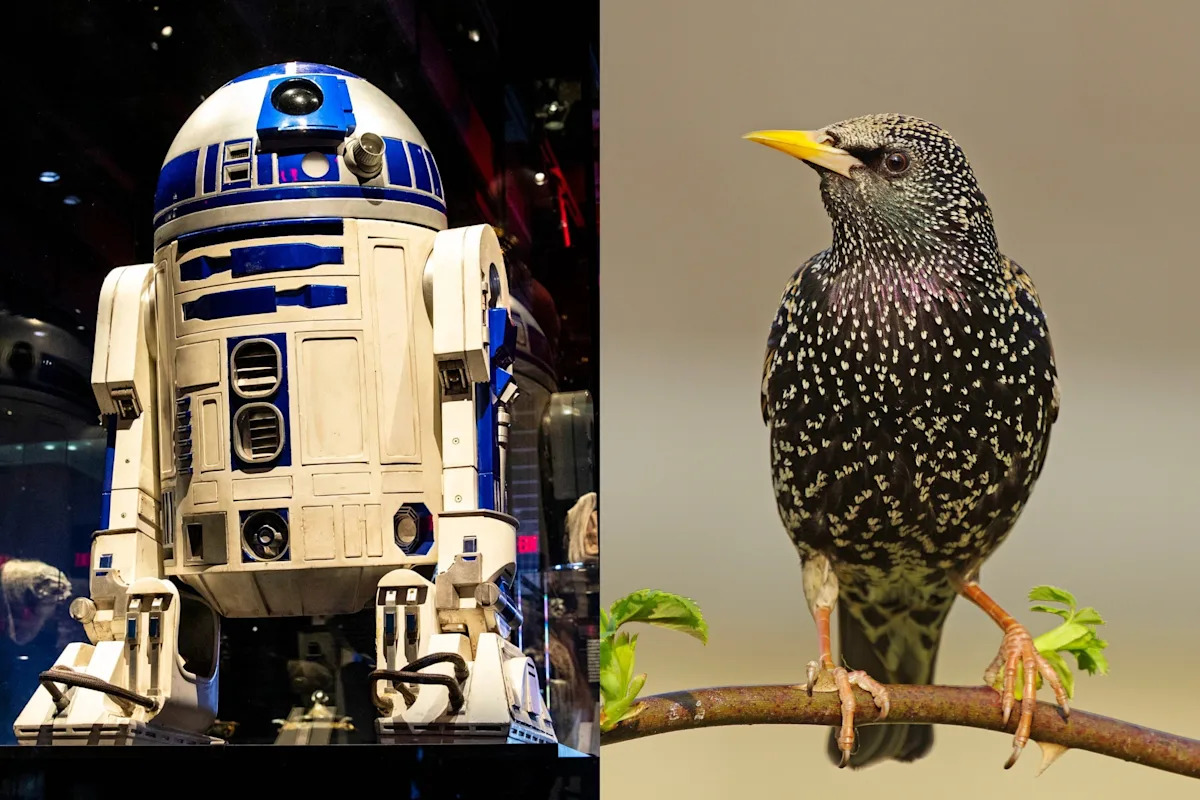A long time ago in a galaxy far, far away, R2-D2 beeped and booped—and now birds that copy the Star Wars character are giving scientists fresh insight into how different species imitate complex sounds. A study, published recently in Scientific Reports, analyzed the sounds of nine species of parrots, including Budgies, as well as European Starlings to see how accurately each bird mimicked R2-D2’s robotic whirring.
Researchers did acoustic analyses on samples of birds imitating the plucky droid that were already available online to compare how statistically similar each bird’s noises were to a model of R2-D2’s sounds. The starlings, a type of songbird, emerged as star vocalists: their ability to produce “multiphonic” noises—in their case, two different notes or tones expressed simultaneously—allowed them to replicate R2-D2’s complex chirps more accurately. Parrots and budgies, which only produce “monophonic” (or single-tone) noises, imitated the droid’s sounds with less accuracy and musicality.
The differing abilities stem from physical variations in the birds’ “syrinx”—a unique vocal organ that sits at the base of the avian windpipe. “Starlings can produce two sounds at once because they control both sides of the syrinx independently,” says study co-author Nick Dam, an evolutionary biologist at Leiden University in the Netherlands. “Parrots are physically incapable of producing two tones simultaneously.”
[Sign up for Today in Science, a free daily newsletter]
It isn’t exactly known why different species developed differing control over their syrinx. “Likely, some ancestor of songbirds happened to evolve the ability to control the muscles on both sides of the syrinx, and this helped them in some way,” says University of Northern Colorado biologist Lauryn Benedict, who wasn’t involved in the study but sometimes works with its authors. One of the leading explanations involves mating; the better at singing a male songbird is, the more females he attracts.
Though the study is “a really elegant way of approaching this question of whether the starlings versus the parrots are capable of producing the same sound with the same accuracy,” it doesn’t fully address how much training or rewards the birds received, says Nicole Creanza, an evolutionary biologist at Vanderbilt University, who also wasn’t involved with the research.
Benedict agrees that the researchers could work with the public to do more tightly controlled trials. (And she and other scientists are looking for public submissions of other examples of parrots imitating sounds for their “The Many Parrots Project“) “A wider sample would be really neat,” she says, “and they could test all kinds of different sounds, not just R2-D2!”

